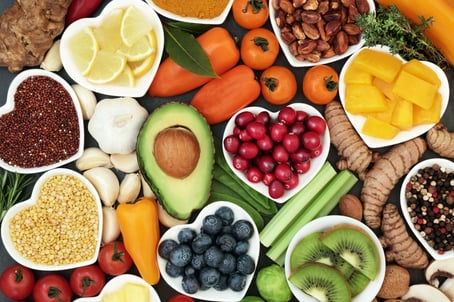 Are you one of those people who are always hungry? Are you constantly thinking about your next meal or snack and what you’re going to eat? The issue could be that you aren’t choosing meals or snacks that fill you up and keep you satisfied. So the alternative is grazing constantly to get that full feeling.
Are you one of those people who are always hungry? Are you constantly thinking about your next meal or snack and what you’re going to eat? The issue could be that you aren’t choosing meals or snacks that fill you up and keep you satisfied. So the alternative is grazing constantly to get that full feeling.
Luckily there are lots of foods out there that are filling and will keep you satisfied longer. These foods are ones that are high in protein, fiber, or good-for-you fat. Here’s a list of 10 foods to choose when you want to stay fuller longer.
- Nuts: Nuts have all three things that help keep you full: healthy fat, protein, and fiber. The key is to stick to a serving size because they are calorie dense. Measure out an ounce and enjoy all types of nuts at snack time or meals to keep you full.
- Avocado: Loaded with good-for-you fat, these tasty treats are a nice addition to a sandwich or salad, or as a dip for veggies. Like nuts, they are very calorie dense, though, so a little goes a long way. Stick to a fourth of an avocado as a serving and enjoy the benefits of staying satisfied.
- Eggs: Studies have found that protein keeps you more full than carbs. When you eat eggs versus a bagel for breakfast, the eggs win every time for post-meal satisfaction. Start your day with this complete protein; grab a hard-boiled egg for a snack or add it to your salad at lunch and enjoy staying fuller longer.
- Popcorn: This tasty snack is high in fiber, which helps with the full factor. It also takes up a lot of volume, which means a serving size is pretty large (3 cups!) for a snack. So, if you like to reach for a larger snack, popcorn could be your new go-to item!
- Berries: Loaded with fiber, these sweet and tasty fruits are an excellent way to increase your fullness factor. They can easily be added to breakfast, lunch, dinner, or snack time. The cancer-fighting antioxidants are just an added bonus.
- Cottage cheese: Dairy foods are high in protein, which is a plus for keeping you full. Cottage cheese is also a great way to vary your snack routine. Toss in some fruit, veggies, or nuts for some crunch, and every day can be a different experience.
- Celery: If you have heard that celery is a negative-calorie food, you know this a great go-to item for filling you up and keeping you full. It’s low in calories and high in water and fiber content, both of which will help keep those hunger pangs away.
- Greek yogurt: Another protein-packed goodie is Greek yogurt. Choose a 2% variety to add some fat to your snack or meal. The portion-controlled cup is also nice to help keep the serving size in check.
- Beans: You get protein and fiber-filled goodness with all of your bean varieties! Toss them into soups, salads, and dips and enjoy the benefits of staying full longer.
- Sugar-snap peas: Another high-fiber veggie that you can add to your routine is sugar-snap peas. They are crunchy and filling and super easy to prepare. Just wash and go!
Add some or all of these 10 foods to your daily routine and enjoy the benefits of keeping that growling stomach at bay!
This blog was written by Angie Mitchell, RD, Wellness Coordinator. To find out more about the NIFS bloggers, click here.


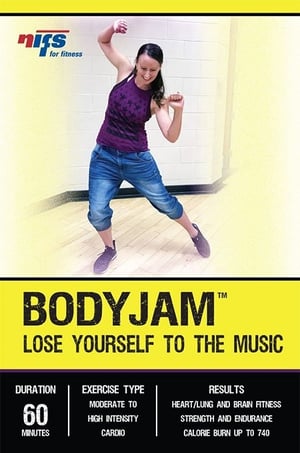 BODYJAM
BODYJAM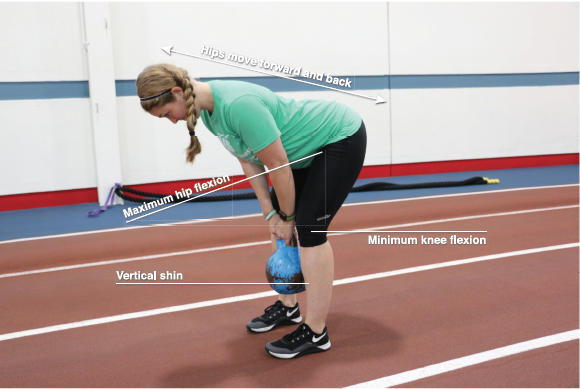
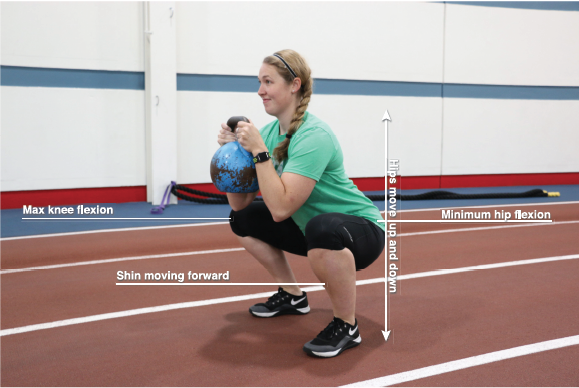
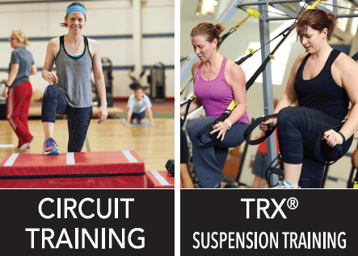 Group Fitness
Group Fitness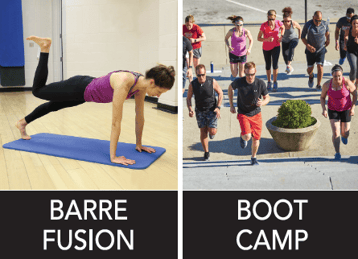 Specialty Classes are Included in NIFS Group Fitness Schedule
Specialty Classes are Included in NIFS Group Fitness Schedule 
 Throughout your life, you will come across times and situations that are tough, making you feel as though getting through it all is inconceivable and hopeless. There are more traditional ways to deal with these ups and downs of life, such as therapy, but there are other ways to overcome stress in life that can be as easy as taking a walk, shooting some basketball, or even lifting weights.
Throughout your life, you will come across times and situations that are tough, making you feel as though getting through it all is inconceivable and hopeless. There are more traditional ways to deal with these ups and downs of life, such as therapy, but there are other ways to overcome stress in life that can be as easy as taking a walk, shooting some basketball, or even lifting weights.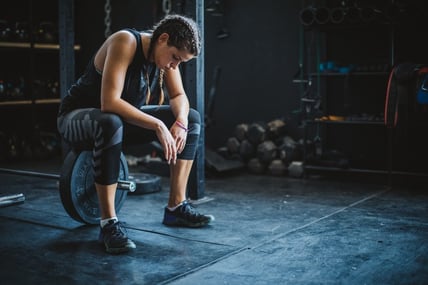 The peripheral pollution surrounding what fitness and wellness should look like and how you get there is near epidemic status. The topic of high-intensity training receives the majority of the attention, with using Olympic lifts for conditioning a close second. And oh, what is “Insta-worthy” is atop the pollution charts as well. Okay, so that last one was a personal gripe more than based on empirical data. No matter; there are so many messages out there, many of them incorrect and downright unsafe, that it is hard to wade through the muck to get to the clear and beneficial information.
The peripheral pollution surrounding what fitness and wellness should look like and how you get there is near epidemic status. The topic of high-intensity training receives the majority of the attention, with using Olympic lifts for conditioning a close second. And oh, what is “Insta-worthy” is atop the pollution charts as well. Okay, so that last one was a personal gripe more than based on empirical data. No matter; there are so many messages out there, many of them incorrect and downright unsafe, that it is hard to wade through the muck to get to the clear and beneficial information.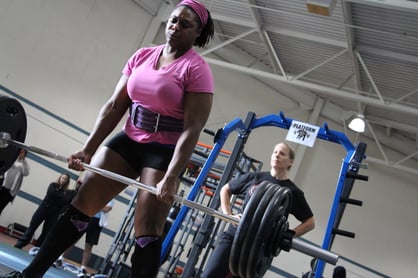 Weight-lifting belts have become a staple in many gym settings for powerlifting, Olympic lifting, bodybuilding, and strongman, and for anyone who wants to lift heavy loads. Whether you use them for training or on the competition platform, you need to know the ins and outs of weight belts so that you can make a smart decision.
Weight-lifting belts have become a staple in many gym settings for powerlifting, Olympic lifting, bodybuilding, and strongman, and for anyone who wants to lift heavy loads. Whether you use them for training or on the competition platform, you need to know the ins and outs of weight belts so that you can make a smart decision.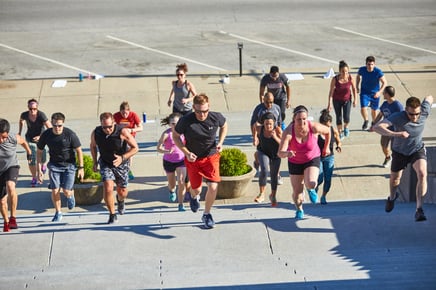 You either love them or you hate them… group workouts! In a world where technology is seemingly taking over the human connection and interaction, working out with a group can offer the opportunity to meet real friends instead of virtual ones online.
You either love them or you hate them… group workouts! In a world where technology is seemingly taking over the human connection and interaction, working out with a group can offer the opportunity to meet real friends instead of virtual ones online.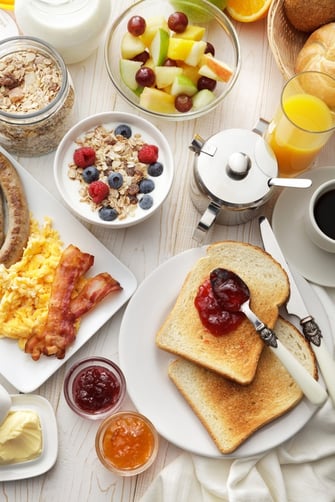 There are so many diets out there that it can be confusing as to what you should follow and who you should listen to when it comes to healthy and balanced eating. If you aren’t sure where to begin to change your current routine, take a look at these tips that Registered Dietitians (the experts in healthy habits) recommend.
There are so many diets out there that it can be confusing as to what you should follow and who you should listen to when it comes to healthy and balanced eating. If you aren’t sure where to begin to change your current routine, take a look at these tips that Registered Dietitians (the experts in healthy habits) recommend.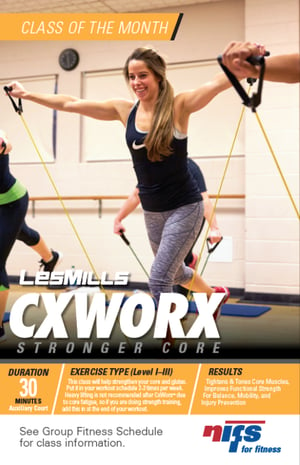 CXWORX
CXWORX